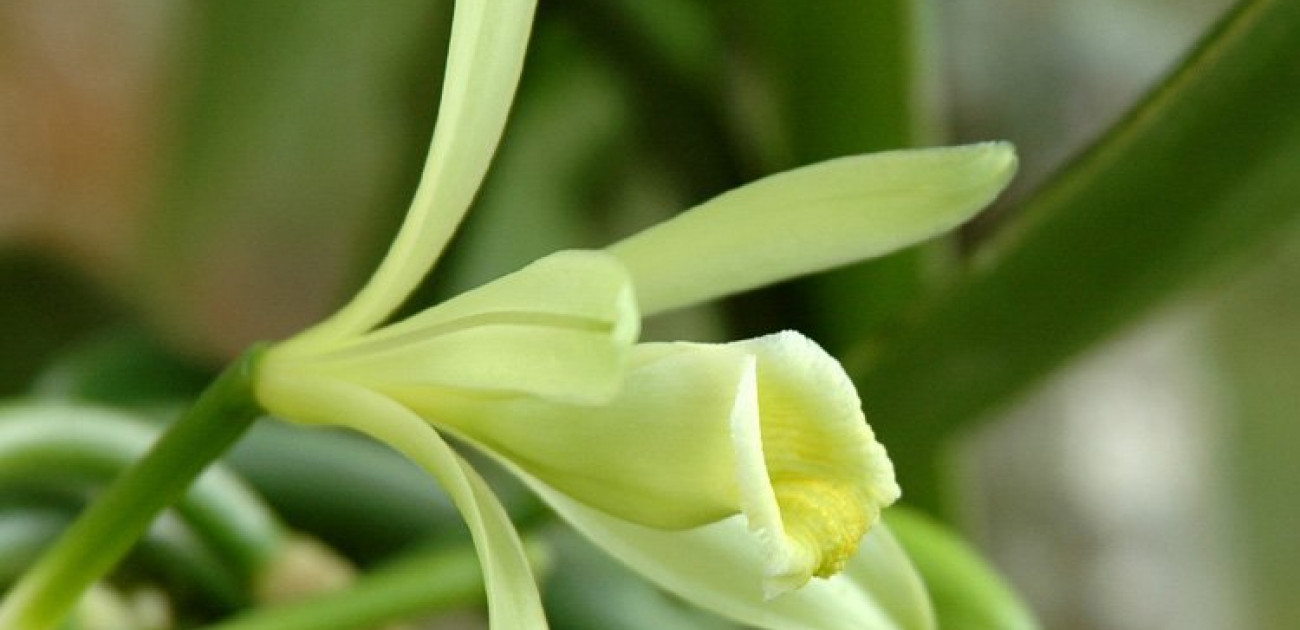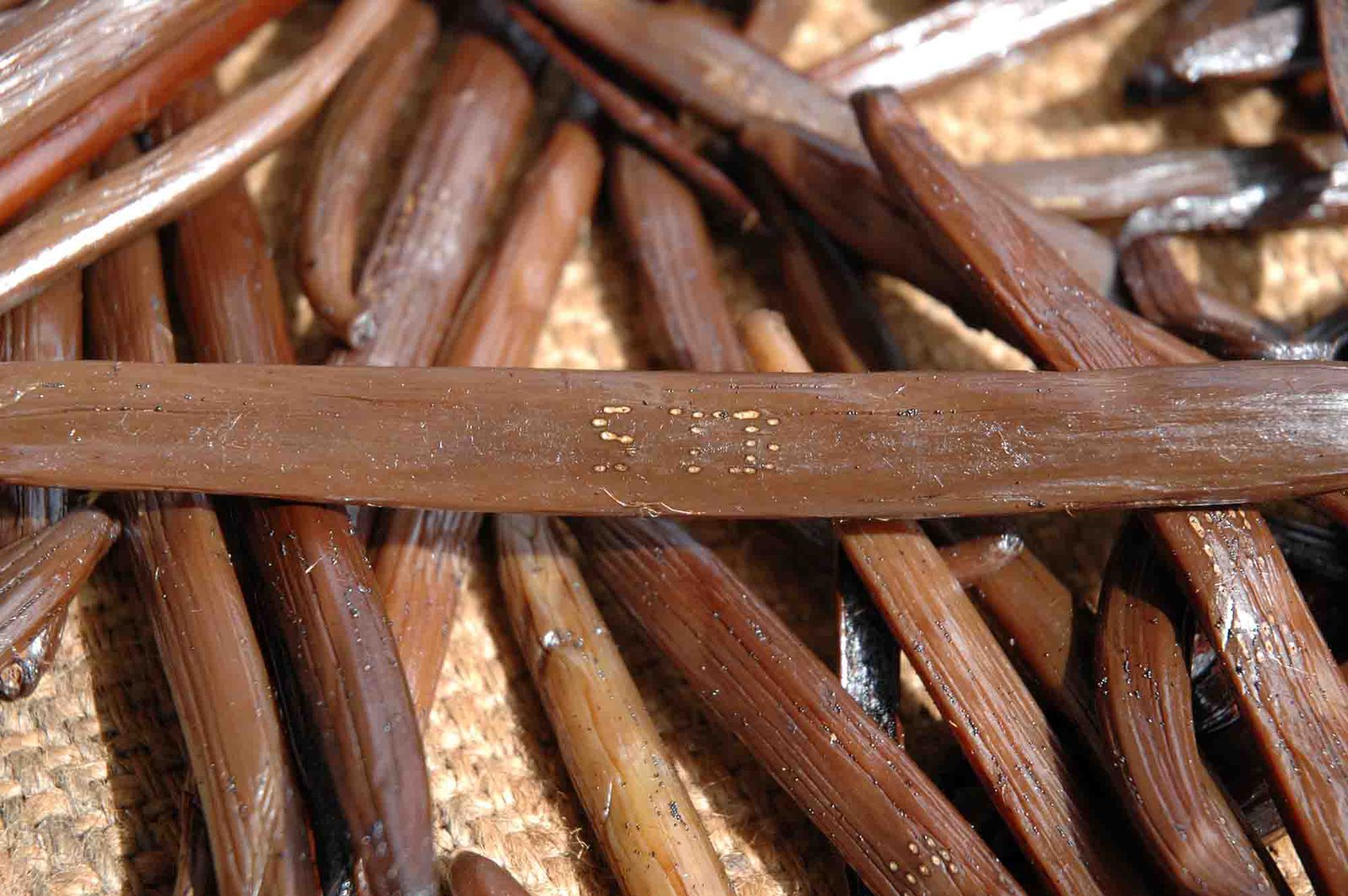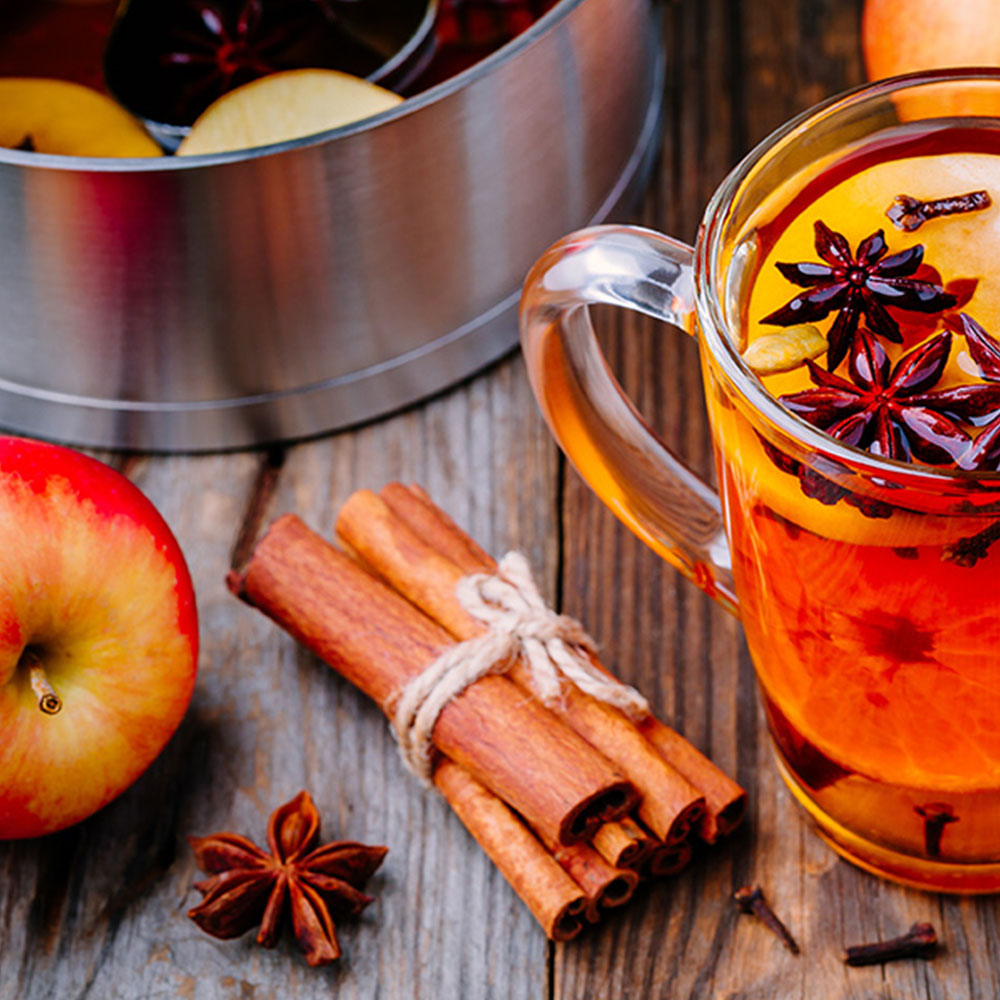27 May 2009
Vanilla – The Temperamental Diva

A brief history of vanilla
Vanilla – the fruit of a perennial, climbing orchid – was discovered by the Totanac Indians in Mexico. They developed the process of fermenting the pods which brings out vanilla’s natural flavour components.
 When the Aztecs conquered the Totanacs, they were so enchanted by the aroma and flavour of vanilla that they forced their new subjects to grow the beans for them as tribute to the Emperor.
When the Aztecs conquered the Totanacs, they were so enchanted by the aroma and flavour of vanilla that they forced their new subjects to grow the beans for them as tribute to the Emperor.
Vanilla beans were used as an aphrodisiac, a herbal remedy and as a medium of exchange. Most critically, however, they were used as the flavouring for a blend of powdered cacao beans, ground corn and honey – this became the legendary xocaotl, the “legend of the gods”.
Hernán Cortés, the Spanish conquistador, became the first European to taste xocaotl when he was offered it by Emperor Moctezuma II in 1519 in the Aztec capital of Tenochtitlan. Cortés was so enchanted by the aroma and flavour that he killed Moctezuma and conquered his people, claiming Mexico for Spain. The Spanish soon established factories in Spain to manufacture chocolate flavoured with vanilla.
Xocaotl became chocolate from the Aztec, while the secret flavouring, tlilxochitl, became vanilla from the Spanish “small pod” or “small scabbard”.
In 1602, High Morgan, the apothecary to Elizabeth I, suggested that vanilla could be used on its own as a flavour. The Virgin Queen was so enamoured of the flavour of vanilla that during her last years she would only eat foods prepared with vanilla.
The popularity of vanilla quickly spread through Europe, but nowhere so much as France. The French adored vanilla (and still do), so, in desperation for a more accessible source of vanilla, they smuggled out cuttings to their own colonies in 1793. The plants thrived in the tropics, but would not bear fruit.
The vanilla orchid is a small, trumpet-shaped light yellow flower. There is a thin membrane separating the male anther from the female stigma, so external help is needed to encourage pollination from the anther to the stigma.
The problem was a very small bee – the melipona bee. In 1836, Charles Morren, a Belgian botanist, discovered that the flowers were pollinated by the melipona bee, which is indigenous only to Mexico. Without this insect intervention, vanilla vines do not bear fruit and so vanilla was impossible.
However, the French on their Island of Réunion came up with a process called la marriage de vanilla – by piercing the membrane of the flower with a bamboo skewer you can collect the male pollen and transfer it to the sticky female stigma. This process was devised by a former slave, Edmond Albinous, in 1841. It was later discovered that the Totanacs had been doing this for hundreds of years in Mexico!
Vanilla plantations became established in the Bourbon Islands of Réunion, Madagascar, Mauritius and the Comoros, as well as other tropical regions, such as Sri Lanka, the Seychelles, Indonesia and parts of mainland Africa, such as the Uganda.
Sadly, however, the discovery of artificial vanilla from the waste sulphite liqueur of paper mills, coal tar extracts or eugenol (the oil from cloves) nearly ruined the natural vanilla industry. This imitation vanilla is a fraction of the price of natural vanilla and accounts for the bulk of vanilla flavouring used in the global market for ice-cream, confectionery and beverages – look for the word “vanillin” on the list of ingredients.
Growing, harvesting and curing
Growing vanilla
Vanilla is one of the most labour intensive crops in the world, ranking alongside saffron. There are 2 main species of vanilla orchid: Vanilla planifolia Andrews which is the classic Bourbon style vanilla and is grown in the Bourbon Islands (including Madagascar), India, Indonesia and Mexico; Vanilla tahitensis Moore is the species grown in Tahiti and Papua New Guinea.
Vanilla grows best in regions 10 – 20 degrees north or south of the equator. The climate must be warm, moist and tropical. Ideally, the humidity should be high and the wind light, however the Bourbon Islands do suffer from tropical storms which can decimate crops. The soil should be rich in organic matter ,and as it is usually grown on smallholdings of 1 – 1½ acres, vanilla growers tend to use natural fertilisers and mulches.

Vanilla vines are grown from cuttings planted alongside “tutor trees” on which to climb. The trees are pruned short to keep the plants within reach of the farmers and workers. The vines do not produce a worthwhile crop until their 3rd year, but they continue to bear a good crop for at least 7 years.
The plants flower for only part of 1 day and if not pollinated at that time no pods will develop and so they are tended daily and pollinated by hand using la marriage de vanilla. Shortly after pollination, the beans appear, reaching 10cm – 18cm in 6 weeks, then they need a further 8 – 9 months to reach full maturity.
 Just as with the flowers, the beans do not all mature at once and so the beans require daily attention. In Madagascar, each grower will use a cork with a pin in a unique pattern to label their beans with a simple bar code; when you get your matured beans it may look like a series of dots/blotches of lighter brown on the bean.
Just as with the flowers, the beans do not all mature at once and so the beans require daily attention. In Madagascar, each grower will use a cork with a pin in a unique pattern to label their beans with a simple bar code; when you get your matured beans it may look like a series of dots/blotches of lighter brown on the bean.
Harvesting and curing vanilla
After about 7 – 8 months from initial pollination, the green vanilla pods begin to turn yellow at their tip. This means that they are ready for picking. Just as with the flowers, the green pods do not all become ready for picking at the same time, and so vanilla growers must check their vines on a daily basis.
In some vanilla-harvesting areas, the beans are harvested early to meet demand and reduce theft but this leads to an inferior bean. Conversely, if the bean is left on the vine too long, the pod may split and can no longer be sold whole, but can be used for extracts or the ice cream industry.
The first stage of the curing process differs slightly from region to region. It is this stage that starts the enzymatic process that causes the classic vanilla flavours and aromas to develop. Thereafter, the process is fairly similar from country-to-country similar.
In Madagascar and the rest of the Bourbon Islands, India, Tahiti and Tonga, the raw green beans are plunged into hot water to “kill” them. After this, the pods are laid out on mats in the sun to heat up for hours, where the workers handle the beans and turn them over. Late in the afternoon, the baking hot beans are collected and wrapped in blankets and straw mats, then placed into air-tight wooden containers to “sweat” overnight. This process is repeated for weeks until the head curer is happy that the beans have been properly cured. During this stage, the raw green beans turn a dark brown.
The beans are then held in a conditioning room for a further 3 – 6 months where the flavours develop further. During this conditioning stage, the beans are handled regularly, softening and shaping them – in the Madagascar they roll the beans between their fingers and so resulting in a rounded shape, while in India they tend to flatten them between their fingers giving a flatter, longer shape.

In Mexico, however, the process is begun in an oven. The green vanilla beans are wrapped in blankets, then straw mats and baked in ovens for 24 – 48 hours.
In Indonesia, Java and Uganda, the curing process is done more quickly with the beans being cured over a smoky wood fire or even a propane heater. The resultant bean is inferior and can only be used for extracts.
After the curing process is complete, the beans are sorted and graded according to quality, length and moisture content. Moisture content is quite important – if the beans are too dry, they lack flavour; if they are too moist, they also lack flavour. Good moisture levels are 18 – 25% - ours average around 20%. About 1kg of cured vanilla comes from about 5kg of green beans.
For export, the beans are sorted into bundles and tied together with raffia. These are then packed in wax paper lined square tin containers with loose fitting covers. Steenbergs Fairtrade vanilla beans come as bundles vacuum-packed in 5kg amounts to preserve the flavour.
The world’s best vanilla is called Madagascan Bourbon – named after L’Île de Bourbon, the former name for the Island of Réunion. This designation now applies to all vanilla beans from the islands of the Comoros, Madagascar, Mauritius and Réunion. Of these, the best comes from Madagascar where vanillin levels are 2.5%. The vanilla from India is almost of the same quality now as that from Madagascar – the climate is similar and the Bourbon process has been taught to the Indians by growers from Madagascar.
Tasting notes
Fresh vanilla pods have no flavour or taste. After fermentation, they develop a rich, mellow, intensely perfumed aroma with hints of liquorice or tobacco matched by a delicate, fruity or creamy flavour. They may also have hints of raisin or prune or smoky, spicy notes. Its flavours and aroma come from vanillin as the major flavour component as well as well over 250 additional trace flavour components. It is these subtle variations in relative amounts of aromatic aldehydes, esters, oils, organic acids and resins as well as the vanillin that creates the individuality of vanilla. No scientist can duplicate the individuality of vanilla.
Good vanilla pods are deep brown or black, long and narrow and somewhat wrinkled, moist, waxy, supple and immediately fragrant. The best pods have a light, white frosting, called givre, of vanillin crystals; so don’t worry about this on your pods, it’s a sign of quality and is not fungal growth.
The individual flavour profile of the beans is a result of the terroir and the curing process. Terroir consists of the soil, general climate and specific annual weather patterns.
Bourbon vanilla from Madagascar has a rich creamy flavour with sweet velvety notes (almost like chocolate); Bourbon vanilla from Réunion has a similar rich creamy flavour but with sweet spicy notes; Mexican vanilla is traditionally considered to be the most delicate and complex – it has the rich creamy flavour but with a hint of allspice; Indian and Ugandan vanilla are less full and creamy in flavour than the vanilla from the Bourbon Islands; Indonesian vanilla has a smoky, strong flavour.
Vanilla coming from Vanilla tahitensis Moore is different in flavour. Tahitian vanilla is heady, floral and fruit.
Vanilla extract
Vanilla extract is made by chopping the vanilla beans, then immersing them in a mixture of water and alcohol, which is continuously re-circulated through the beans until the essential flavour has been dissolved into the liquid. The details of the process vary from extractor to extractor. Some of the cheaper products – e.g. Supercook/ Dr Oetker in the UK - use propylene glycol as the solvent, which is an industrial solvent.
The simplest method is chops some vanilla beans up and immerse them into alcohol. This can be done quite easily at home – take a bottle of pure flavourless shop-bought alcohol, such as vodka, and chop some beans and put into the bottle. Shake it every few days and after 3 months, you will have your own vanilla extract.
A more controlled version of this is undertaken by extractors like Nielsen-Massey, who extract their vanilla at a warm temperature – maintained at 22oC, 365 days a year. They claim that this is cold-processed, but that’s warm for North Yorkshire. They then circulate different solutions of alcohol solvent over the beans fully to extract the flavours. This process takes about a month after which the finished extract is filtered and bottled.
Other producers carry out faster extraction by heating the solvent and using different levels of pressure. This can reduce the extraction time down to 48 hours.
The resultant “perk” is then filtered in a holding tank where it is aged like wine. Sugar or corn syrup is sometimes added to mellow the alcohol and to assist with aging. Once bottled, the aging process can continue for 2 to 3 years a bit like a good malt whisky from the Isle of Islay.
For the Steenbergs organic Fairtrade vanilla extract, we use the quicker extraction process. We don’t believe that the colder extraction process produces any better quality extraction, in spite of the views held by some other vanilla businesses. The key to the flavour is not the differential between the temperatures but rather the quality of the beans and the care taken in the extraction process.
Steenbergs organic Fairtrade vanilla extract is made as follows: whole organic Fairtrade vanilla beans are chopped and placed into a large processing vessel. A mix of water and organic ethanol (about 60:40) are added and the vanilla beans are steeped, gently heated to around 70oC and stirred for 24 hours prior to drawing off; this is done at atmospheric pressure. The same beans are re-extracted 2 further times and then all the batches are blended together to create the final end product.
Unlike some other vanilla products, we don’t add sugar or syrup as we believe that this obfuscates the delicate vanilla flavours and while it does dampen the alcohol aroma it’s tampering with a good product for the sake of giving a more consistent, more pleasing aroma while masking the vanilla notes with added sweetener. Going back to the whisky analogy, a good whisky is left to mature unadulterated whereas you can blend it with sugar to create a new product, a liqueur, such as Drambuie or Southern Comfort.




